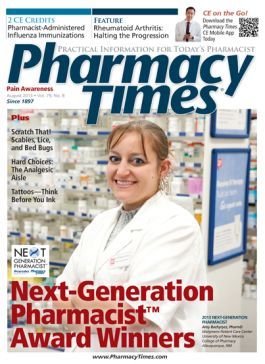Case Studies
Case 1
AC is a 28-year-old man recently diagnosed with HIV infection. With a CD4 count of 300 cells/mm3, AC was started on first-line highly active antiretroviral therapy (HAART) consisting of ritonavir-boosted atazanavir + tenofovir/emtricitabine. A fasting lipid profile taken on initiation of his HAART regimen and 4 weeks after initiation revealed lipid levels within normal range. However, his most recent fasting lipid profile revealed an elevated LDL cholesterol level of 184 mg/dL and a slightly low HDL cholesterol level. AC has been a 1-pack-per-day smoker for the past 10 years but has no other comorbidities. AC’s goal LDL cholesterol is <130 mg/dL due to his multiple risks for coronary heart disease. AC presents to the pharmacy today with a new prescription for simvastatin 20 mg daily.
As the pharmacist, what suggestions (if any) would you make to AC’s prescribing physician?
Case 2
LM is a 63-year-old woman who reports frequent nightly awakenings and trips to the bathroom several nights per week. LM explains that she often gets the urge to urinate unexpectedly and cannot always make it to the bathroom in time. She tells you of an incident last week when she “was out shopping with friends and had an accident in the store.” LM was terribly embarrassed and does not want that to ever happen again. She asks you, as her pharmacist, what she can do to treat her frequent and sometimes uncontrollable urge to go to the bathroom.
What advice should you, the pharmacist, give LM?
ANSWERS
Case 1: Dyslipidemia has been associated with HIV infection itself, and the use of protease inhibitor—based HAART in patients with HIV is also a major cause of secondary dyslipidemia. Current guidelines recommend that all HIV patients who meet the criteria for lipid-lowering therapy should be managed according to the National Cholesterol Education Program ATP III Guidelines. These guidelines suggest HMG-CoA reductase inhibitors (or statins) as first-line agents; however, drug–drug interactions should be carefully considered when selecting the most appropriate statin to start in patients taking protease inhibitors. Many protease inhibitors are inhibitors of the CYP3A4 isoenzyme that is responsible for the metabolism of many statins, in particular simvastatin and lovastatin. For this reason, AC’s concomitant use of simvastatin is contraindicated with protease inhibitors due to the increased risk of rhabdomyolysis. AC should be switched to a statin that is not metabolized by CYP3A4, such as pravastatin. The therapeutically equivalent dose of simvastatin 20 mg is pravastatin 40 mg; at this dose, AC can expect LDL lowering (about 35%) that is sufficient to reach his goal.
Case 2:
LM seems to be experiencing signs and symptoms of urge incon- tinence, better known as overactive bladder (OAB). Behavioral therapy is the recommended first-line treatment option for patients with OAB. Therefore, the pharmacist could recommend that LM try techniques such as bladder training, prompted voiding, and Kegel exercises to strengthen her pelvic muscles. In addition, modifying fluid intake and limiting consumption of caffeinated beverages can help manage urinary incontinence.
Pharmacologic treatment options for OAB include the antimuscarinic agents oxybutynin and tolterodine. Oxybutynin has a direct antispasmodic effect on the bladder smooth muscle. By increasing bladder capacity, decreasing uninhibited contractions, and delaying the desire to void, oxybutynin decreases the urgency and frequency associated with OAB. Tolterodine works to improve OAB symptoms by increasing residual volume and decreasing detrusor muscle pressure. The extended-release formulations of these products are preferred over the immediate-release formulations due to lower rates of anticholinergic side effects (including dry mouth). If after a few months LM’s behavioral therapy does not successfully treat her OAB, the pharmacist could then recommend that she talk to her physician about exploring pharmacologic options.
An oxybutynin (3.9 mg/day) transdermal patch was approved by the FDA on January 25, 2013, as the first over-the-counter treatment for OAB in women 18 years and older and is expected to be available in fall 2013.
function showAnswer() {document.getElementById("answer").style.display = 'block';document.getElementById("link").style.display = 'none';}
Brienne L. Dufresne is a PharmD candidate and Dr. Coleman is associate professor of pharmacy practice and director of the pharmacoeconomics and outcomes studies group at the University of Connecticut School of Pharmacy.

